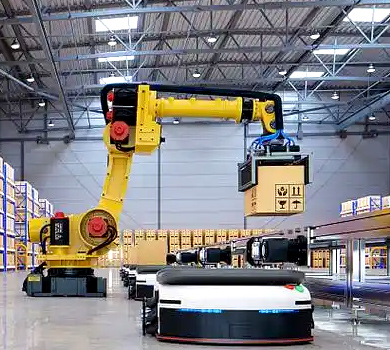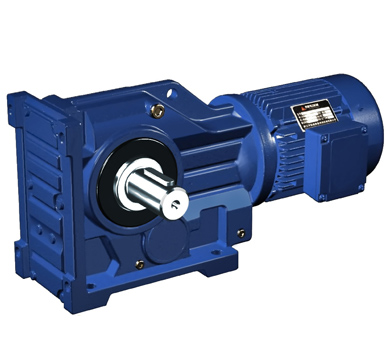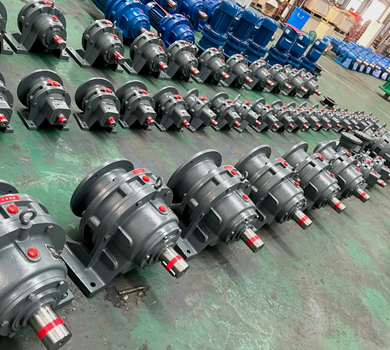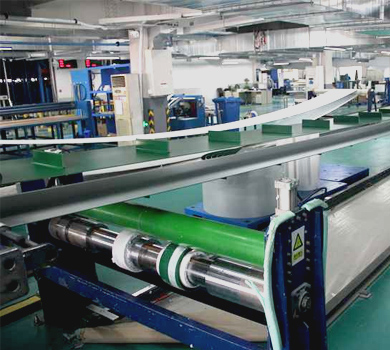Industry Challenges and Pain Points Analysis
Semiconductor lithography equipment is one of the most critical and technically demanding segments in industrial automation. The focus fine-adjustment module is a vital component in lithography systems, responsible for maintaining nanometer-level precision during the photolithography process. These modules typically consist of a high-precision motor, a gear system, a control unit, and a feedback mechanism to ensure consistent and repeatable performance.
With the ongoing trend of miniaturization and the transition to advanced nodes (e.g., 5nm and below), the requirements for motion control systems have become increasingly stringent. Key challenges in the industry include:
- High tolerance for misalignment, requiring sub-micron positioning accuracy;
- Need for compact and lightweight designs to fit within limited space constraints;
- High demands on system stability to ensure continuous operation with minimal downtime;
- Energy efficiency and thermal management under high-precision operation;
- Compatibility with cleanroom environments and the ability to resist contamination and vibration;
- Short maintenance cycles due to high operational intensity.
Key Role and Technical Requirements of Gearboxes in This Industry
Within the focus fine-adjustment module of lithography equipment, gearboxes play a central role in translating motor output into highly accurate and controlled mechanical motion. The core performance requirements for gearboxes in this application include:
- High Torque Density: To provide sufficient force while maintaining a compact form factor;
- Ultra-High Transmission Accuracy: Typically less than ±1 arcmin to ensure nanometer-level precision;
- Fast Dynamic Response: To accommodate high-speed micro-adjustments during the exposure process;
- Excellent Compatibility: With various motor types and control systems;
- Environmental Adaptability: Must operate reliably in high-temperature and cleanroom conditions;
- Long Service Life: To reduce maintenance frequency and ensure system uptime;
- Low Backlash and Vibration: To prevent micro-level errors that can impact yield and quality.
Waimica's 3-in-1 Gearbox-Motor-Controller Solution for Semiconductor Lithography Equipment
Waimica's integrated 3-in-1 (Gearbox + Motor + Controller) drive system is specifically designed to address the challenges and demands of high-precision motion control in semiconductor manufacturing. The solution offers:
- Ultra-compact and modular design for quick integration;
- Sub-micron precision with high repeatability;
- High efficiency to reduce heat generation and improve energy savings;
- Customizable input flange options and installation methods;
- Compliance with cleanroom standards and high IP ratings for dust and moisture resistance;
- Advanced thermal management and sealed bearings for long life and reliability in extreme conditions.
| Parameter | Waimica | Brand A | Brand B |
|---|---|---|---|
| Torque Density (Nm/kg) | 12.8 | 10.2 | 11.5 |
| Backlash | ±0.5 arcmin | ±1.0 arcmin | ±1.2 arcmin |
| Efficiency (%) | 92 | 88 | 89 |
| Operating Temperature Range (°C) | -10 to +85 | -5 to +80 | -10 to +80 |
| IP Rating | IP67 | IP66 | IP66 |
| Service Life (Typical) | 10,000+ hours | 8,000 hours | 9,000 hours |
| Modularity and Integration | Integrated 3-in-1 design | Multi-unit assembly required | Multi-unit assembly required |
Typical Application Scenario and Customer Feedback
A leading lithography equipment manufacturer in Europe was facing frequent maintenance and low system stability in their focus fine-adjustment module due to high vibration and thermal drift in the traditional motor + gearbox + controller setup. Waimica's engineering team conducted a detailed site assessment and provided a customized 3-in-1 drive solution that met all technical specifications and environmental conditions.
- Requirement Matching: Waimica's gearbox-motor-controller unit was selected for its compact design and ultra-high transmission precision, which were key to reducing system complexity and improving motion accuracy;
- Implementation Process: Our technical team collaborated closely with the customer's R&D and installation departments to ensure seamless integration and optimized performance;
- Performance After Deployment: The system's mean time between failures (MTBF) increased by 40%, maintenance cycles extended from 1,500 to 2,200 hours, and positioning accuracy improved from ±2 to ±0.5 arcmin.
| Parameter | Before Waimica | After Waimica |
|---|---|---|
| MTBF (hours) | 6,000 | 8,400 |
| Maintenance Interval (hours) | 1,500 | 2,200 |
| Positioning Accuracy (arcmin) | ±2 | ±0.5 |
| System Complexity | High | Low |
| Cost of Ownership | High | Reduced by 25% |
Conclusion and Waimica Brand Value Summary
Waimica’s 3-in-1 drive solution for semiconductor lithography equipment demonstrates a strong technical advantage in precision, reliability, and integration. Our products not only meet the stringent performance requirements of this high-tech industry, but also offer a more cost-effective alternative to traditional international suppliers, while ensuring high quality and on-time delivery.
As a leader in high-precision motion control solutions, Waimica is committed to providing tailored support through our engineering team and flexible customization options, making us a valuable long-term partner for automation and precision manufacturing projects in the semiconductor industry.









